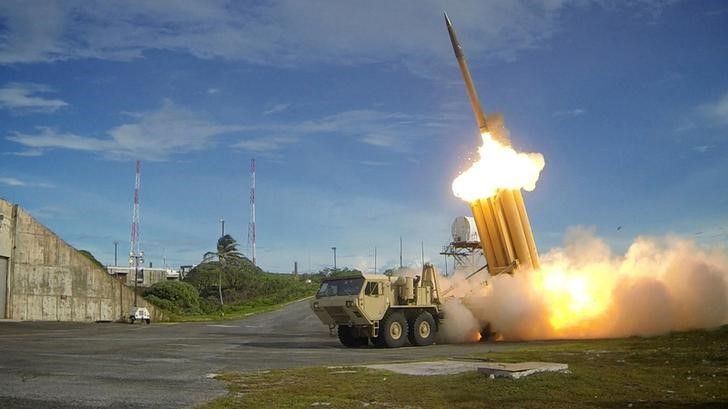North Korea Planning Attack? THAAD Deployment Will Weaken Kim Jong Un's Leverage, Top US Official Says

Amid growing tensions in the Korean peninsula over North Korea's continued missile tests, the deployment of a U.S. missile defense system in South Korea is seen as a critical part of efforts to lessen North Korea's leverage from asymmetric weapons, a top American military commander in Seoul said Thursday.
Gen. Vincent K. Brooks, who leads the U.S. Forces Korea (USFK), made the comments a day after leader Kim Jong Un reportedly ordered mass production of a medium-range ballistic missile with the ability to reach U.S. bases.
Brooks said, according to Yonhap News, a "very dangerous situation" is looming over the peninsula as North Korea carried out missile launches, claiming to be capable of carrying nuclear warheads. Pyongyang's actions are holding South Korea and neighboring countries at risk, and there is need to "take that risk away without taking his systems away," he said.
Read: North Korea Ready To Attack US? Pyongyang Claims Latest Missile Was An IRBM, South Korea Denies
"I am not suggesting that we allow him to keep his weapons," Brooks said, during a speech at a security forum in Seoul. "We have to actually address the vulnerabilities we have here in the Republic of Korea (South Korea) and find ways to lessen that vulnerability."
While talking about the Terminal High Altitude Area Defense (THAAD) anti-missile system, Brooks said the weapon provided the allies with a critical and unprecedented "area defense" against the threats from North Korea.
"This is all about North Korean missiles and the threat that North Korean missiles pose to the Republic of Korea, and it's for the defense of the Republic of Korea and nothing else," Brooks said.
THAAD has been designed to intercept and destroy ballistic missiles either just inside or outside the earth's atmosphere. Its deployment in a rural region some 180 miles southeast of Seoul raised concerns not only for North Korea but also China.
China, which is Seoul's top trading partner, expressed concerns THAAD could also be a threat to the viability of Beijing's nuclear deterrent. The range of its radars can penetrate deep into the Chinese mainland, where the country is rebuilding its arsenal of mobile intercontinental ballistic missiles.
North Korea continues testing ballistic missiles despite several warnings and strong sanctions imposed by the United Nations. The reclusive country warned the U.S. about its recent military drills with South Korea as well as its missile defense system, THAAD, installed in South Korea in April. North Korea has accused the U.S. of escalating tensions with its actions and refers to its missile launches as measures to safeguard its country.
“By relentlessly bringing in a number of strategic nuclear assets to the Korean peninsula, the U.S. is gravely threatening the peace and safety and driving the situation to the brink of nuclear war,” North Korean officials said in a statement in April. “This has created a dangerous situation in which thermo-nuclear war may break out at any moment.”
Pyongyang has also given rise to concerns that Kim's regime may be close to building a nuclear weapon that could hit the U.S. mainland. However, many experts believe North Korea is far from developing such a missile.
© Copyright IBTimes 2024. All rights reserved.





















